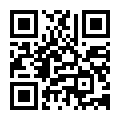customized
24 Hours After Sell Service
12 Months
ISO 9001:2000, CE
Polishing
Casting
Alloy Steel
200-800mm
800-1300mm
Required by Customer
Provided by Customer
TCROLL
Wooden Case
customized
China
Product Description

Rollers for Paper Making Industry
Rollers for Calender Machine mainly including chilled roll, oil heating roll, steam heating roll, rubber roll, calendar roll and mirror roll, a three roller calender consists of 3 main calender rolls arranged vertically in a stack. The paper web passes through the nips between these rolls under heat and pressure to produce the desired finish.
The rolls are:
Hard Roll or Calender Roll - Usually a chilled cast iron or steel roll that provides high linear pressure and smoothing action. Located as the center roll.
Soft Roll - Made of a compressible cotton, fabric, polymer or rubber covering over a metal core. The soft roll is located on top and helps distribute pressure.
Heated Roll or Oil Heating Roll - A hollow steel roll heated with steam/thermofluids. Located at the bottom. Heats and softens the paper surface. We call Steam heating roll.
The paper web passes through the top nip between the soft and hard rolls first. It then goes through the bottom nip between the hard roll and heated roll.
Pressure in the nips can be adjusted by mechanical loading systems or hydraulics. Temperatures and roll positions can also be controlled.
Rollers for Calender Machine mainly including chilled roll, oil heating roll, steam heating roll, rubber roll, calendar roll and mirror roll, a three roller calender consists of 3 main calender rolls arranged vertically in a stack. The paper web passes through the nips between these rolls under heat and pressure to produce the desired finish.
The rolls are:
Hard Roll or Calender Roll - Usually a chilled cast iron or steel roll that provides high linear pressure and smoothing action. Located as the center roll.
Soft Roll - Made of a compressible cotton, fabric, polymer or rubber covering over a metal core. The soft roll is located on top and helps distribute pressure.
Heated Roll or Oil Heating Roll - A hollow steel roll heated with steam/thermofluids. Located at the bottom. Heats and softens the paper surface. We call Steam heating roll.
The paper web passes through the top nip between the soft and hard rolls first. It then goes through the bottom nip between the hard roll and heated roll.
Pressure in the nips can be adjusted by mechanical loading systems or hydraulics. Temperatures and roll positions can also be controlled.
Advantages of our Calender Rolls :
Improved smoothness and gloss of paper - The pressure applied by the rollers helps smooth out the paper surface and impart a glossy finish. The more rollers, the greater the calendering effect.
Flexibility: Rollers allow adjustments to nip pressure and temperature to optimize the calendering process for different paper weights/grades.
Durability and elasticity: Steel rollers maintain their shape and elasticity better compared to alternatives like felt belts. This ensures uniform pressure across the paper width.
Ease of operation and maintenance: Rollers are easy to install, replace and maintain compared to belt or plate calenders. No need for extensive lubrication or cooling systems.
Space saving: Roller stacks allow calendering in a relatively small footprint compared to the length needed for belt calenders.
Versatility: Small diameter rollers can be used for soft calendering without much gloss improvement. Larger rolls apply higher pressure for desired gloss levels.
Energy efficiency - The friction between rollers requires less energy compared to belts which need higher tensioning forces.
Improved smoothness and gloss of paper - The pressure applied by the rollers helps smooth out the paper surface and impart a glossy finish. The more rollers, the greater the calendering effect.
Flexibility: Rollers allow adjustments to nip pressure and temperature to optimize the calendering process for different paper weights/grades.
Durability and elasticity: Steel rollers maintain their shape and elasticity better compared to alternatives like felt belts. This ensures uniform pressure across the paper width.
Ease of operation and maintenance: Rollers are easy to install, replace and maintain compared to belt or plate calenders. No need for extensive lubrication or cooling systems.
Space saving: Roller stacks allow calendering in a relatively small footprint compared to the length needed for belt calenders.
Versatility: Small diameter rollers can be used for soft calendering without much gloss improvement. Larger rolls apply higher pressure for desired gloss levels.
Energy efficiency - The friction between rollers requires less energy compared to belts which need higher tensioning forces.




FAQ
Q1. Are You a Trading Company or Manufacture ?
A1: We are a factory , which has been established for 30 years. Strict quality control of production processes
and tolerances.Manufacture products according to your drawings or specifications.








 Audited Supplier
Audited Supplier
